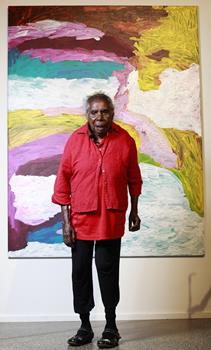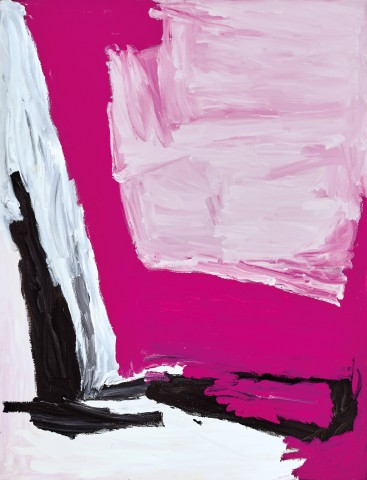DIBIRDIBI COUNTRY, 2008
MIRDIDINGKINGATHI JUWARNDA SALLY GABORI
synthetic polymer paint on linen
198.0 x 151.0 cm
bears inscription verso: artist's name, title, medium and Mornington Island Arts and Crafts cat. 3455-L-SG-0808 and Alcaston Gallery cat. AK14654
Mornington Island Arts and Crafts, Mornington, Queensland
Alcaston Gallery, Melbourne (gallery stamp on stretcher bar verso)
Private collection, Canberra, acquired from the above in 2008
This work is accompanied by a certificate of authenticity from Alcaston Gallery and a copy of a certificate from Mornington Island Arts and Crafts which states: ‘My painting shows the saltpan that runs across my husband’s country on Bentinck Island.’
Nyinyilki Country - Nyinyilki is where we catch Barramundi, Alcaston Gallery, Melbourne, 13 January – 21 February 2009
Ninjilki, 2008, synthetic polymer paint on canvas, 198.8 x 460.6 cm, in the collection of the National Gallery of Victoria, Melbourne
220086 2.jpg

Mirdidingkingathi Juwarnda Sally Gabori’s paintings are a tribute to the country on Bentinck Island, a small low lying and sparsely vegetated island in the southern Gulf of Carpentaria where she grew up living off the natural abundance of the surrounding ocean and estuaries in the traditions of the Kaiadilt. In 1948, following a series of natural disasters, Gabori along with the other inhabitants of Bentinck Island, were forced to relocate to Gununa on nearby Mornington Island.
Almost sixty years later in 2005, Gabori (then in her early eighties) was invited to participate with other Kaiadilt in an art workshop at the Mornington Island Art Centre, where it became clear that her early paintings – often crude abstract depictions of the myriad of fish found in the surrounding estuaries and sea – offered a unique and colourful expression of her personal and family stories spawned from the memories of her early years on Bentinck Island. By painting each place over and over, she relived memories of the people and places she loved. As Cara Pinchbeck states, ‘Gabori’s works are a celebration of her homeland and illustrate a deep connection to country that has not diminished through separation. From her very earliest works, she has depicted aspects of her own beloved country as well as that of her brother, father and husband – including both geographical aspects of the landscape as well as the wildlife, specifically sea-life which is central to the landscape.’1
Dibirdibi Country, 2008 recalls one of Gabori’s favourite subjects, the country of her husband, Kabarrarjingathi Bulthuku Pat Gabori – a subject and location painted more often by the artist than any other. Recalling the country of her husband and the Rock Cod Ancestor, this painting shows a large saltpan that runs across her husband’s country close to the site where the liver of Dibirdibi, the Rock Cod Ancestor, was thrown into the sea, creating a permanent fresh water well. Covered with opaque layers of varied colours, combined with strong gestural mark-making, Gabori’s canvases are an expression of her love for her husband and the landscape of her country.
1. Pinchbeck, C., ‘Mirdidingkingathi Juwarnda Sally Gabori’ in unDisclosed: 2nd National Indigenous Art Triennial, National Gallery of Australia, Canberra, 2012, p. 64
CRISPIN GUTTERIDGE
